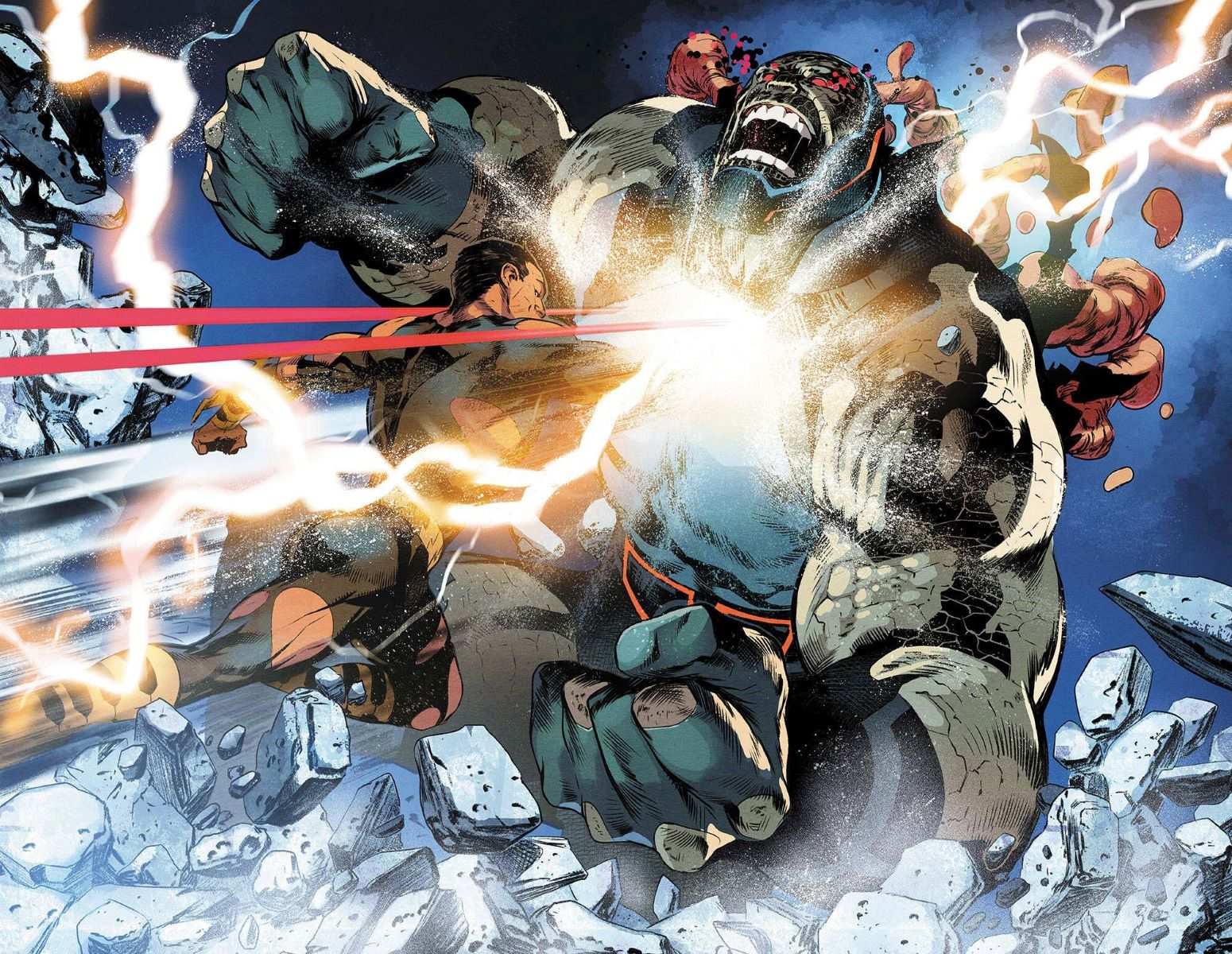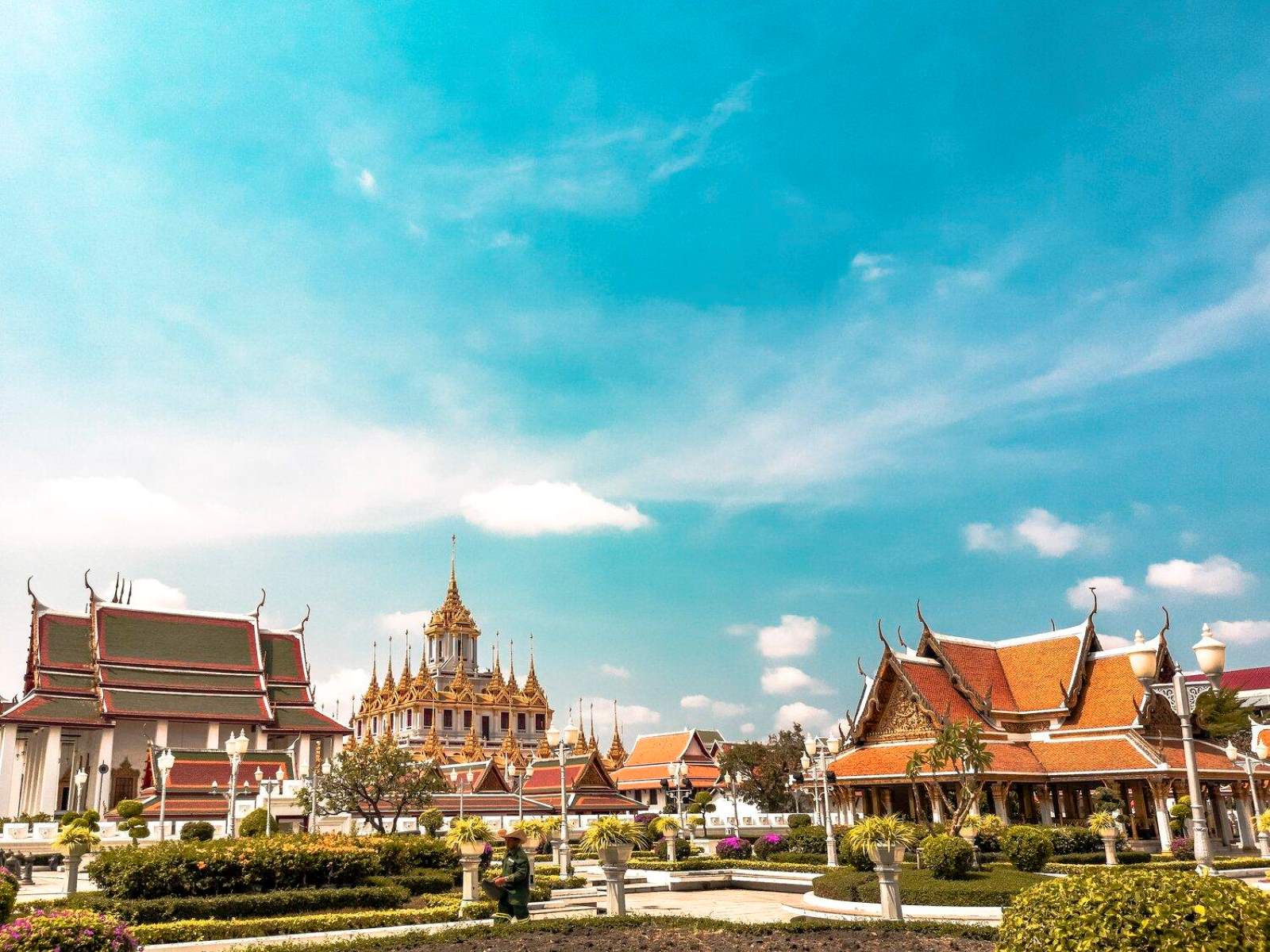Home>History>The Ultimate Showdown: Attila The Hun Vs Genghis Khan – Who Reigns Supreme?


History
The Ultimate Showdown: Attila The Hun Vs Genghis Khan – Who Reigns Supreme?
Published: January 10, 2024
Discover the epic clash between Attila the Hun and Genghis Khan, two legendary figures in history. Uncover the ultimate showdown and find out who emerges as the true ruler. Explore the legacy of these iconic leaders.
(Many of the links in this article redirect to a specific reviewed product. Your purchase of these products through affiliate links helps to generate commission for Regretless.com, at no extra cost. Learn more)
Table of Contents
Introduction
The clash of titans in history often sparks the imagination and curiosity of enthusiasts and scholars alike. Two formidable figures, Attila the Hun and Genghis Khan, stand out as iconic symbols of military prowess and leadership in the annals of history. Their indelible legacies continue to captivate the modern world, prompting comparisons and debates about their respective influence and achievements.
In this article, we embark on an enthralling journey through time to unravel the remarkable lives and conquests of Attila the Hun and Genghis Khan. By delving into their early lives, rise to power, military campaigns, leadership styles, and enduring legacies, we aim to shed light on the enduring question: Who Reigns Supreme?
As we navigate through the annals of history, we will uncover the defining moments that shaped these legendary figures and explore the profound impact they left on the world. Join us as we embark on a compelling exploration of two of history's most formidable leaders, delving into the intricacies of their reigns and the enduring echoes of their conquests.
Early Life and Background
Attila the Hun, often referred to as the "Scourge of God," was born around 406 AD, inheriting the throne from his uncle, King Rua, in 434 AD. His early years were marked by exposure to the brutal realities of the Hunnic way of life, as well as the intricate political dynamics that defined his era. Raised within a society deeply rooted in nomadic traditions, Attila imbibed the ethos of strength, resilience, and strategic acumen from a young age.
In stark contrast, Genghis Khan, born as Temujin in 1162, faced a tumultuous childhood, grappling with the harsh realities of the Mongolian steppes. Following the murder of his father, he endured a period of adversity, navigating the complexities of tribal alliances and rivalries. Temujin's formative years were shaped by the unyielding landscapes of the Mongolian plains, instilling in him a tenacious spirit and an unwavering determination to rise above the challenges that beset him.
Despite the contrasting circumstances of their upbringing, both Attila and Genghis Khan were deeply influenced by the formative experiences of their early lives. These experiences would go on to mold their characters, imbuing them with the resilience, adaptability, and strategic insight that would define their future conquests.
As Attila ascended to the throne, he inherited a legacy steeped in the traditions of the Hunnic tribes, with a formidable reputation as fierce warriors and skilled horsemen. This rich heritage, coupled with his exposure to the complex political landscape of the Hunnic Empire, laid the groundwork for Attila's future exploits as a formidable leader and military tactician.
Similarly, Genghis Khan's early years amidst the rugged terrain of the Mongolian steppes honed his survival instincts and instilled in him a deep understanding of the land and its people. His encounters with adversity and the intricate web of tribal dynamics served as a crucible, forging his resolve and nurturing the visionary leadership that would later propel him to unparalleled heights of conquest and dominion.
The early lives of Attila the Hun and Genghis Khan offer a compelling glimpse into the formative experiences that shaped these legendary figures, laying the foundation for their ascendance as indomitable leaders and architects of vast empires. These pivotal years, marked by adversity, resilience, and profound transformation, set the stage for the epic chapters of conquest and dominion that would etch their names into the annals of history.
Rise to Power
Attila the Hun's ascent to power was propelled by a combination of strategic alliances, political maneuvering, and a shrewd understanding of the dynamics within the Hunnic Empire. Following the death of his uncle, King Rua, Attila emerged as the undisputed leader of the Huns, assuming the mantle of kingship and embarking on a transformative journey that would reshape the course of history.
Attila's early years as a ruler were characterized by a keen sense of ambition and a resolute determination to consolidate his authority. Leveraging his astute political acumen, he forged strategic alliances with neighboring tribes, expanding his sphere of influence and solidifying his position as the paramount leader of the Huns. His ability to navigate the intricate web of tribal dynamics and foster alliances bolstered his standing within the empire, laying the groundwork for his ambitious military campaigns and far-reaching conquests.
In a parallel narrative, Genghis Khan's rise to power unfolded amidst the volatile landscape of the Mongolian steppes. Temujin, as he was known in his early years, embarked on a relentless quest to unify the disparate Mongol tribes under his visionary leadership. Through a combination of strategic marriages, tactical alliances, and military prowess, he succeeded in consolidating his authority, earning the esteemed title of Genghis Khan – the universal ruler.
Temujin's ascendancy to the mantle of Genghis Khan marked the culmination of a remarkable journey, characterized by unwavering determination, strategic foresight, and a profound understanding of the tribal dynamics that defined the Mongolian landscape. His ability to forge a cohesive and formidable force from disparate tribal entities underscored his exceptional leadership and laid the foundation for the awe-inspiring conquests that would follow.
The rise to power of Attila the Hun and Genghis Khan stands as a testament to their remarkable leadership, strategic prowess, and the ability to navigate the complex tapestries of political intrigue and tribal dynamics. These pivotal chapters in their respective journeys laid the groundwork for the epoch-defining campaigns and conquests that would cement their status as legendary figures in the annals of history.
Military Campaigns
Attila the Hun's military campaigns reverberated across the annals of history, marking an era of unparalleled conquest and dominion. Fueled by an insatiable thirst for expansion and a formidable army, Attila embarked on a series of relentless campaigns that would leave an indelible mark on the map of Europe.
At the helm of his fearsome Hunnic warriors, Attila unleashed a relentless onslaught, striking fear into the hearts of his adversaries and carving a path of conquest that knew no bounds. His military campaigns were characterized by swift and devastating offensives, showcasing his tactical acumen and the unparalleled ferocity of his forces. From the fertile plains of Gaul to the heart of the Eastern Roman Empire, Attila's hordes surged forth, leaving a trail of awe and terror in their wake.
Genghis Khan, the visionary architect of the Mongol Empire, orchestrated a symphony of conquest that reshaped the contours of Asia and beyond. His military campaigns were a testament to his strategic brilliance and the unrivaled prowess of the Mongol warriors under his command. From the sweeping steppes of Central Asia to the ancient civilizations of China and Persia, Genghis Khan's forces surged forth with unrelenting force, leaving a legacy of awe-inspiring conquest in their wake.
The military campaigns of Attila and Genghis Khan stand as enduring testaments to their indomitable spirit, strategic foresight, and the awe-inspiring might of their armies. These legendary leaders reshaped the geopolitical landscape of their respective eras, leaving an indelible mark on history through their unparalleled conquests and the enduring legacy of their martial prowess.
Leadership Style
Attila the Hun's leadership style was characterized by a potent blend of charisma, strategic acumen, and an unwavering resolve to inspire unwavering loyalty and fervent dedication among his warriors. As the paramount leader of the Huns, Attila exuded an aura of authority and commanded the unswerving allegiance of his followers through his compelling presence and magnetic charisma. His ability to instill a sense of unity and purpose among his warriors, transcending the diverse tribal affiliations within his empire, underscored his exceptional leadership prowess.
Attila's leadership was marked by a keen understanding of the psychological dynamics that underpin human motivation, enabling him to rally his forces with unwavering determination and unyielding resolve. His strategic acumen and astute decision-making endowed him with the ability to navigate the complexities of warfare and diplomacy, securing his position as a formidable leader whose influence reverberated far beyond the borders of his empire.
In parallel, Genghis Khan's leadership style was defined by a visionary approach that transcended conventional norms, fostering a sense of unity and purpose among the disparate Mongol tribes under his dominion. His leadership prowess lay in his ability to inspire unyielding loyalty and fervent dedication among his warriors, forging a cohesive and formidable force that defied the odds and reshaped the course of history.
Genghis Khan's leadership was characterized by a profound understanding of the intricate dynamics that govern human behavior, enabling him to cultivate an unwavering sense of camaraderie and shared purpose among his warriors. His visionary leadership style transcended the traditional confines of authority, fostering a sense of unity and purpose that propelled his forces to unparalleled heights of conquest and dominion.
Attila the Hun and Genghis Khan, each in their own right, embodied the quintessence of exceptional leadership, commanding the unwavering allegiance of their warriors and leaving an indelible mark on the annals of history through their visionary leadership styles. Their ability to inspire unyielding loyalty, foster a sense of unity, and navigate the complexities of warfare and diplomacy underscored their enduring legacy as iconic leaders whose influence transcended the boundaries of time and space.
Legacy and Impact
Attila the Hun and Genghis Khan, towering figures of antiquity, left an indelible legacy that continues to reverberate through the corridors of time. Their enduring impact on history transcends mere conquests and dominion, encompassing profound cultural, political, and societal ramifications that have shaped the fabric of civilizations for centuries.
Attila the Hun's legacy is etched in the annals of Europe's collective memory, as the "Scourge of God" who unleashed unparalleled terror and awe-inspiring conquests across the continent. His relentless military campaigns left an enduring imprint on the geopolitical landscape, reshaping the contours of power and influence. The fear and reverence inspired by Attila's name permeated the collective consciousness of the era, leaving an indelible mark on the psyche of future generations.
Beyond the realm of conquest, Attila's legacy engendered a profound impact on the political dynamics of the Eastern Roman Empire and the barbarian tribes of Europe. His formidable presence and relentless offensives compelled emperors and kings to reevaluate their strategies and alliances, reshaping the balance of power and igniting a seismic shift in the political equilibrium of the era.
Genghis Khan's legacy, in turn, transcends the boundaries of Asia, leaving an enduring imprint on the tapestry of human civilization. His visionary leadership and awe-inspiring conquests forged the sprawling Mongol Empire, uniting disparate cultures and paving the way for an unprecedented era of cultural exchange and interconnectedness. The far-reaching impact of Genghis Khan's empire extended beyond mere territorial dominion, fostering an era of unprecedented economic prosperity and intellectual flourishing.
The enduring legacy of Genghis Khan's empire is exemplified by the profound cultural and societal transformations that permeated the lands under Mongol rule. The Pax Mongolica, a period of relative peace and stability facilitated by the Mongol Empire, ushered in an era of unprecedented exchange and interaction between East and West, catalyzing the transmission of knowledge, ideas, and technologies that would shape the course of human history.
Attila the Hun and Genghis Khan, through their awe-inspiring conquests and visionary leadership, left an indelible imprint on the annals of history, reshaping the geopolitical landscape and fostering cultural exchange and interconnectedness that transcended the boundaries of their empires. Their enduring legacy continues to captivate the imagination and curiosity of scholars and enthusiasts, serving as a testament to the enduring impact of their remarkable lives and conquests.
Conclusion
In the ultimate showdown between Attila the Hun and Genghis Khan, the indomitable spirits of these legendary leaders continue to captivate the imagination and curiosity of enthusiasts and scholars alike. Their remarkable lives and awe-inspiring conquests have left an indelible mark on the annals of history, shaping the geopolitical landscape and fostering cultural exchange and interconnectedness that transcended the boundaries of their empires.
Attila the Hun, revered as the "Scourge of God," unleashed unparalleled terror and awe-inspiring conquests across Europe, leaving an enduring imprint on the collective memory of the continent. His relentless military campaigns reshaped the balance of power and ignited a seismic shift in the political equilibrium of the era. The fear and reverence inspired by Attila's name permeated the collective consciousness of the time, leaving an indelible mark on the psyche of future generations.
In parallel, Genghis Khan's visionary leadership and awe-inspiring conquests forged the sprawling Mongol Empire, uniting disparate cultures and paving the way for an unprecedented era of cultural exchange and interconnectedness. The far-reaching impact of Genghis Khan's empire extended beyond mere territorial dominion, fostering an era of unprecedented economic prosperity and intellectual flourishing. The Pax Mongolica, a period of relative peace and stability facilitated by the Mongol Empire, ushered in an era of unprecedented exchange and interaction between East and West, catalyzing the transmission of knowledge, ideas, and technologies that would shape the course of human history.
As we reflect on the enduring legacies of Attila the Hun and Genghis Khan, it becomes evident that their impact transcends mere conquests and dominion, encompassing profound cultural, political, and societal ramifications that have shaped the fabric of civilizations for centuries. Their exceptional leadership, strategic brilliance, and unwavering resolve continue to inspire and intrigue, serving as a testament to the enduring influence of their remarkable lives and conquests.
The ultimate question of who reigns supreme between Attila the Hun and Genghis Khan remains a matter of enduring debate and fascination. Both leaders, in their own right, left an indelible imprint on the annals of history, reshaping the geopolitical landscape and fostering cultural exchange and interconnectedness that transcended the boundaries of their empires. Their enduring legacies continue to captivate the imagination and curiosity of scholars and enthusiasts, serving as a testament to the enduring impact of their remarkable lives and conquests.














